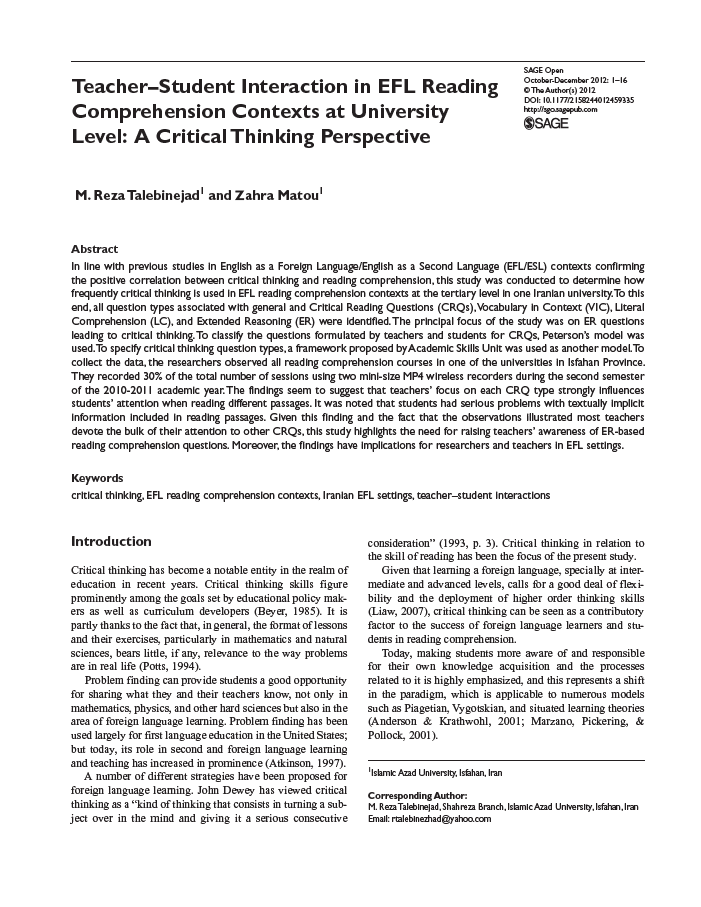Teacher–Student Interaction in EFL Reading Comprehension Contexts at University Level: A Critical Thinking Perspective
Abstract
In line with previous studies in English as a Foreign Language/English as a Second Language (EFL/ESL) contexts confirming the positive correlation between critical thinking and reading comprehension, this study was conducted to determine how
frequently critical thinking is used in EFL reading comprehension contexts at the tertiary level in one Iranian university. To this end, all question types associated with general and Critical Reading Questions (CRQs), Vocabulary in Context (VIC), Literal
Comprehension (LC), and Extended Reasoning (ER) were identified. The principal focus of the study was on ER questions leading to critical thinking. To classify the questions formulated by teachers and students for CRQs, Peterson’s model was
used. To specify critical thinking question types, a framework proposed by Academic Skills Unit was used as another model. To collect the data, the researchers observed all reading comprehension courses in one of the universities in Isfahan Province.
They recorded 30% of the total number of sessions using two mini-size MP4 wireless recorders during the second semester of the 2010-2011 academic year. The findings seem to suggest that teachers’ focus on each CRQ type strongly influences
students’ attention when reading different passages. It was noted that students had serious problems with textually implicit information included in reading passages. Given this finding and the fact that the observations illustrated most teachers
devote the bulk of their attention to other CRQs, this study highlights the need for raising teachers’ awareness of ER-based reading comprehension questions. Moreover, the findings have implications for researchers and teachers in EFL settings.

